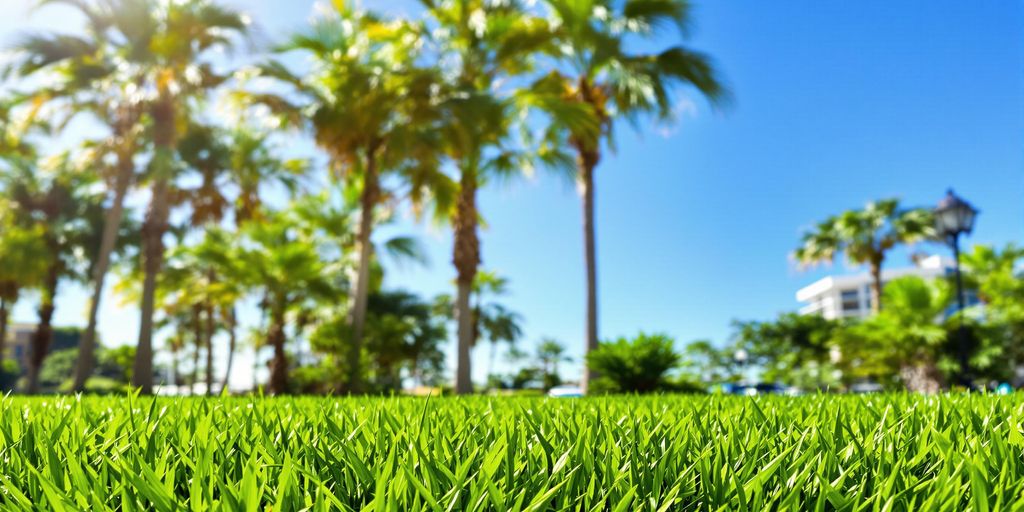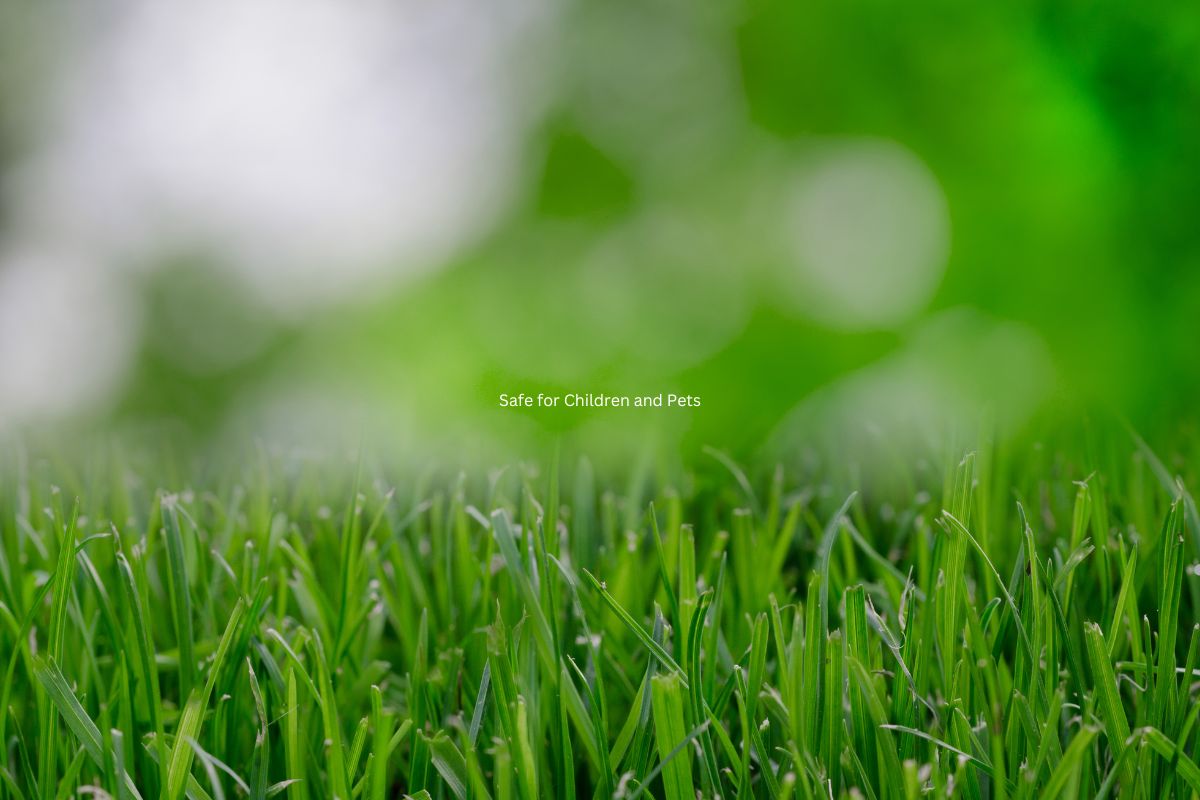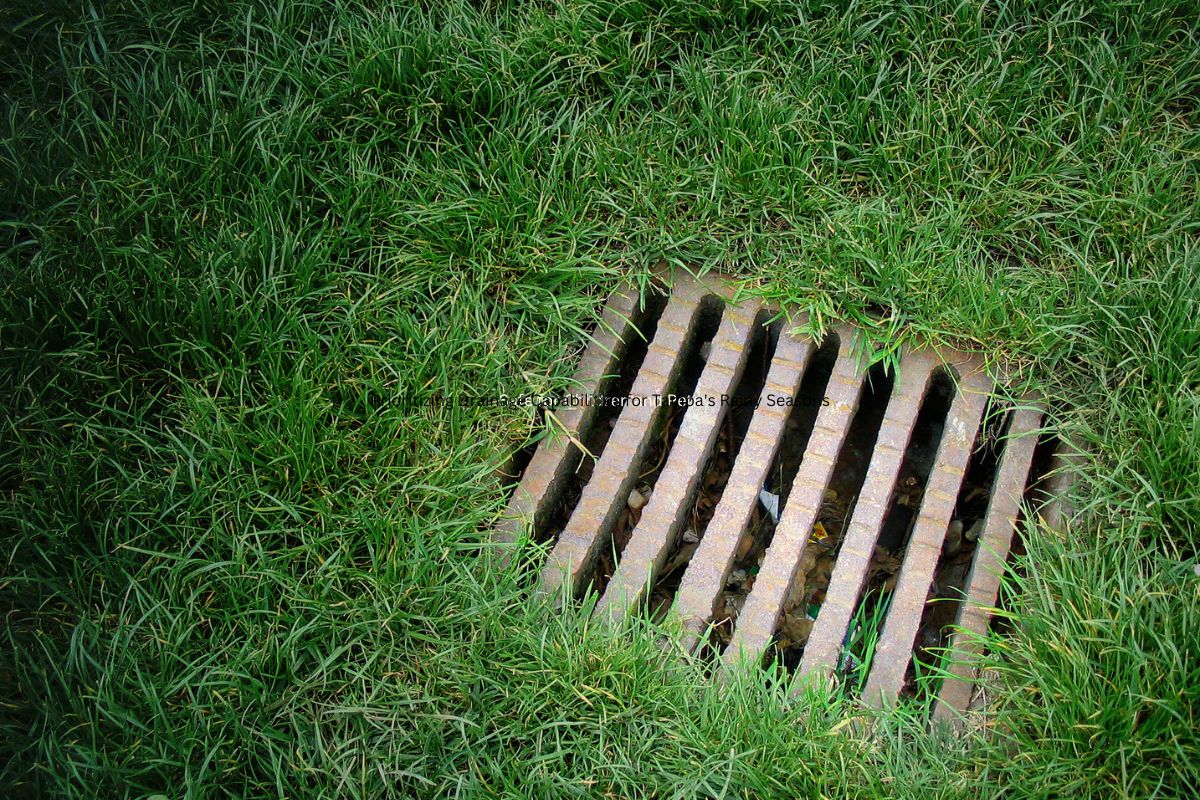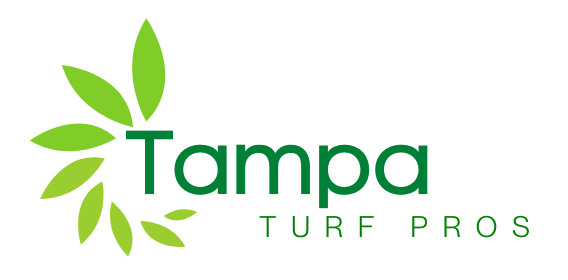
Picking out the right artificial grass in Tampa can feel like a big decision, especially with all the options out there. Tampa’s weather, with its humidity and bright sun, plays a huge role in how well your artificial grass holds up. Plus, there are factors like drainage, maintenance, and how realistic it looks to think about. Don’t worry, though—breaking it all down into smaller pieces makes it much easier.
Key Takeaways
- Tampa’s humid and sunny weather means you need artificial grass that can handle moisture and UV rays.
- Different materials like nylon, polyethylene, and polypropylene offer varying durability and feel.
- Good drainage is super important to prevent water pooling during Tampa’s rainy season.
- Low-maintenance grass types are great for busy homeowners who want easy upkeep.
- Always check warranties and customer reviews to make sure you’re getting a reliable product.
Understanding Tampa’s Climate and Its Impact on Artificial Grass
How Tampa’s Weather Affects Artificial Grass Durability
Tampa’s weather is no joke. With scorching heat, high humidity, and frequent rainstorms, outdoor materials take a beating. Artificial grass is no exception. The intense sun can cause fading and wear over time, while heavy rainfall might lead to drainage issues if the grass isn’t designed for it. Choosing a product built to handle these conditions is essential for long-term satisfaction.
Choosing Grass Types Suitable for High Humidity
Not all artificial grass is created equal, especially when it comes to Tampa’s humid environment. Look for grass types specifically made to resist moisture-related issues like mold and mildew. Polyethylene fibers, for instance, are a great choice because they are less absorbent and hold up well in damp conditions. Avoid options that trap moisture, as they can quickly become breeding grounds for bacteria.
UV Resistance: A Must-Have Feature for Tampa’s Sun
The Florida sun is relentless, and UV resistance is a feature you absolutely want in your artificial grass. Without it, the vibrant green color can fade into an unattractive, washed-out shade. Many high-quality options come with built-in UV protection, ensuring your lawn stays lush and green despite constant exposure to sunlight. When shopping, check the product label or ask about its UV rating to make sure it’s up to the task.
Discover the full range of Our Services to keep your lawn healthy and beautiful. From regular maintenance to specialized treatments, we provide everything your lawn needs to thrive.
Evaluating Material Quality for Long-Term Use

Differences Between Nylon, Polyethylene, and Polypropylene
When picking artificial grass, the material it’s made from really matters. Nylon is known for being super strong and holding its shape, even in high heat. Polyethylene, on the other hand, feels softer and looks more like real grass. Polypropylene is the budget-friendly option, but it’s less durable, especially in hot and humid places like Tampa. Choosing the right material can make a big difference in how long your grass lasts and how good it looks.
| Material | Strength | Softness | Heat Resistance | Cost |
| Nylon | High | Medium | High | $$$ |
| Polyethylene | Medium | High | Medium | $$ |
| Polypropylene | Low | Low | Low | $ |
Why Backing Material Matters for Tampa Installations
The backing of artificial grass is like its foundation. It holds the blades in place and affects how well water drains through. A good backing has multiple layers and is perforated to handle Tampa’s heavy rains. If the backing isn’t sturdy or doesn’t drain well, you might end up with a soggy mess in your yard. Look for backing with polyurethane coatings for better durability.
Ensuring Non-Toxic and Eco-Friendly Options
Safety and the environment are important. Make sure the artificial grass you pick is free from harmful chemicals like lead. Some options are even made from recycled materials, which is a nice bonus. Ask for certifications or labels that prove the grass is non-toxic and safe for kids and pets. If you’re aiming for an eco-friendly yard, this is a step you don’t want to skip.
Picking high-quality materials might cost more upfront, but it saves you from headaches down the road. A little research now can mean years of a great-looking and safe lawn. For more insights on why artificial grass is a great option, check out our 10 Practical Reasons to Opt for Artificial Grass in Tampa for a Greener Lawn.
Prioritizing Drainage Capabilities for Tampa’s Rainy Seasons

Importance of Permeability in Artificial Grass
When it comes to Tampa’s frequent rain showers, permeability is key for artificial grass. The ability of the turf to allow water to pass through is what prevents flooding and pooling in your yard. Without proper permeability, you might end up with soggy patches that can damage the turf and create a messy outdoor space. Look for artificial turf designed for Tampa’s climate, which often includes advanced drainage systems to handle heavy rainfall and maintain functionality.
How to Test Drainage Efficiency Before Purchase
Before committing to any artificial grass, it’s a good idea to test its drainage capabilities. Here’s how you can do it:
- Pour a gallon of water over a small sample of the turf.
- Observe how quickly the water passes through the backing material.
- Check the ground underneath to ensure no water is pooling.
This simple test can save you a lot of trouble down the line. If the water doesn’t drain efficiently, that’s a sign the turf may not be suitable for Tampa’s rainy seasons.
Avoiding Water Pooling Issues in Tampa Yards
Water pooling isn’t just an eyesore—it can lead to mold growth, unpleasant odors, and even damage the turf over time. To avoid these issues:
- Choose artificial grass with a high drainage rate, ideally over 30 inches per hour.
- Ensure the installation includes a slight slope to guide water away from your home.
- Regularly clean debris from the turf to keep drainage holes unclogged.
A well-draining artificial grass system can make a huge difference in maintaining a functional and attractive yard during Tampa’s rainy seasons.
By prioritizing drainage, you’re not just investing in artificial grass—you’re investing in a yard that stays usable and beautiful, no matter the weather.By ensuring proper drainage, you guarantee a lawn that remains lush, functional, and hassle-free throughout the seasons. Call us today!
Considering Maintenance Requirements for Artificial Grass
Low-Maintenance Options for Busy Homeowners
Artificial grass is often chosen for its convenience, but not all options are created equal. Some varieties are specifically designed to require less upkeep, making them ideal for busy homeowners. Look for products with built-in features like antimicrobial coatings, which help reduce odors and prevent bacteria growth. This can save you time and effort in the long run. Additionally, shorter blade lengths and denser grass types tend to trap less dirt, which means less frequent cleaning.
Tools and Techniques for Easy Upkeep
Keeping your artificial grass looking fresh doesn’t have to be a hassle. Here are some tools and tips to make maintenance easier:
- A stiff-bristled brush is perfect for fluffing up flattened areas and removing debris.
- Use a leaf blower to clear leaves and small particles quickly.
- For deeper cleaning, a mild soap and water solution can tackle stains or spills.
For regular upkeep, brushing and sweeping are usually enough to keep dirt and debris at bay. If you notice built-up residue, consider vacuuming or a periodic deep clean.
Preventing Mold and Mildew in Humid Conditions
In Tampa’s humid climate, mold and mildew can be a concern. To minimize the risk, ensure your artificial grass has proper drainage. Permeable backing materials allow water to pass through, preventing stagnant moisture. Regularly inspect shaded areas, as they’re more prone to mold growth. If you spot any issues, clean the area with a vinegar and water mixture to kill spores and stop them from spreading.
A little bit of maintenance goes a long way in keeping your artificial grass looking great and lasting longer. By investing a small amount of effort, you’ll enjoy a yard that stays green and hassle-free for years to come.
Balancing Aesthetics and Functionality
Choosing the Right Blade Height and Density
When picking artificial grass, the height and density of the blades matter a lot. Shorter blades might look tidy, but they can feel stiff underfoot, while taller ones can give a more natural look but might flatten faster in high-traffic areas. Balancing blade height with density ensures a mix of durability and a lush appearance. For Tampa homeowners, a medium height (around 1.5 to 2 inches) often works well, providing a realistic look without being too hard to maintain.
Color Variations That Mimic Natural Grass
Artificial grass comes in a surprising range of greens, from bright lime shades to deeper olive tones. Some even blend multiple shades to look like real grass with slight imperfections. When choosing, consider how the color will look in your yards lighting. A mix of light and dark greens with a touch of brown thatch often creates the most convincing natural look.
Blending Artificial Grass with Tampa Landscaping
Integrating artificial grass into your yard isn’t just about laying down turf. It’s about making it work with your existing plants, pathways, and decorative features. Think about:
- Adding borders with native Tampa plants for a seamless transition.
- Using artificial turf around patios or pools to create a clean, low-maintenance space.
- Incorporating curves and shapes to mimic the flow of natural landscaping.
Artificial grass can transform a yard, but it works best when it complements the whole outdoor space, not just stands out as a patch of green.
For public spaces like playgrounds and public parks, artificial turf can offer both safety and a polished look, making it a practical choice for community areas.
Understanding Installation Processes and Costs
DIY vs. Professional Installation in Tampa
When it comes to installing artificial grass, you’ve got two main options: doing it yourself or calling in the pros. Each choice has its perks and challenges. DIY installation can save money upfront, but it requires time, effort, and some know-how. You’ll need tools like a sod cutter, a plate compactor, and landscaping fabric. Plus, you’ll have to prep the area, lay the base, and secure the turf just right. Professional installers, on the other hand, bring experience and equipment, ensuring a polished result. If you’re not confident in your skills, hiring a pro might be worth the extra cost.
Hidden Costs to Watch Out For
Budgeting for artificial grass isn’t just about the turf itself. There are hidden expenses that can catch you off guard. For example:
- Removing existing grass or soil can add to labor costs.
- Extra materials like infill, edging, and adhesives might not be included in initial quotes.
- Some companies charge for site preparation, especially if your yard has slopes or drainage issues.
On average, the cost of installing artificial grass ranges from $3,243 to $8,725. Keep this in mind while planning your project.
Timeframes for Installation Projects
How long does it take to install artificial grass? It depends on the size of your yard and whether you’re doing it yourself or hiring professionals. A small yard might take a weekend for a DIYer, while larger spaces or complex areas could stretch into a week. Professional teams usually finish faster, often completing projects in 2-3 days. If you’re working with a company, ask for a timeline upfront so you can plan accordingly.
Installing artificial grass is an investment in both time and money, but with proper planning, you’ll enjoy a low-maintenance, lush lawn for years to come.
Exploring Warranty and Customer Support Options
What to Look for in a Warranty Policy
When you’re buying artificial grass, the warranty is like your safety net. A solid warranty should cover at least 8 to 15 years, protecting you from issues like fading, wear, or defects in the material. Look for specifics—does it include coverage for UV damage? How about problems with the backing? A vague warranty might sound good, but it can leave you high and dry when things go wrong. Always check if the warranty is transferable too, especially if you plan to sell your home down the line.
Importance of Responsive Customer Service
Let’s be real—things don’t always go as planned. That’s where good customer service steps in. A responsive team can make or break your experience, whether you’re asking about installation tips or dealing with a defect. Test them out beforehand. Call or email with a question and see how fast they respond. Quick replies and clear answers are a good sign you’re in reliable hands. And don’t underestimate the value of a friendly tone—it makes the whole process less stressful.
Reading Reviews and Testimonials from Tampa Residents
Before you commit, spend some time reading reviews, especially from people in Tampa. They’ll give you a heads-up about any local issues, like how the grass holds up against Tampa’s sun or rain. Look for patterns. If multiple people mention poor drainage or fast fading, it’s a red flag. On the flip side, glowing reviews about durability and easy maintenance can give you peace of mind. Pay attention to how companies handle complaints too—it says a lot about their priorities.
Wrapping It Up
Choosing the right artificial grass for your Tampa home or business doesn’t have to be overwhelming. Just keep in mind what matters most to you—whether it’s durability, how it looks, or how much maintenance you’re willing to do. Tampa’s weather can be tough, so picking something that holds up in the heat and rain is a smart move. Take your time, compare options, and don’t be afraid to ask questions. At the end of the day, you want something that fits your space and makes your life easier. With a little effort, you’ll find the perfect match and enjoy a green, hassle-free lawn for years to come. Contact us to learn more!
Frequently Asked Questions
How does Tampa’s weather affect artificial grass?
Tampa’s hot sun and high humidity can wear down artificial grass over time. Choosing grass with UV protection and materials that resist moisture can help it last longer.
What are the best materials for artificial grass in Tampa?
Nylon, polyethylene, and polypropylene are common options. Nylon is strong, while polyethylene feels soft. Polypropylene is cheaper but less durable. Pick one based on your needs.
Why is drainage important for artificial grass in Tampa?
Tampa gets a lot of rain, so good drainage keeps water from pooling. This helps prevent mold and keeps your lawn looking nice.
Is artificial grass easy to take care of?
Yes, it’s low-maintenance. You might need to brush it, rinse it, and check for mold sometimes, especially in humid weather.
Can I install artificial grass myself?
You can, but professional installation ensures it’s done right. DIY might save money upfront but could lead to problems later.
What should I check in a warranty for artificial grass?
Look for warranties that cover fading, wear, and drainage issues. A good warranty shows the company stands by its product. Check for guarantees that include durability, maintenance, and long-term performance. Call us to learn more!
